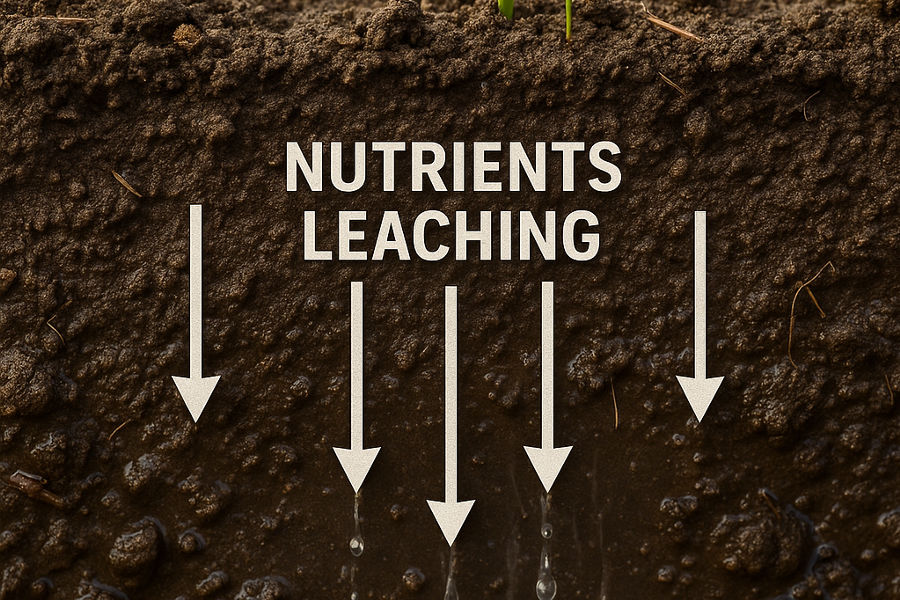Nutrient Leaching: A Hidden Threat to Soil and Crop Health
In modern farming, one silent issue that often goes unnoticed is nutrient leaching. This natural process can lead to significant nutrient loss from the soil, reducing crop productivity and increasing fertilizer costs. Let’s understand what it is, why it happens, and how farmers can manage it.
What is Nutrient Leaching?
Nutrient leaching occurs when water from rainfall or irrigation dissolves nutrients in the soil and washes them deep below the root zone, where plants can no longer absorb them. It is especially common with nutrients like nitrogen (N), potassium (K), and sulfur (S), which are highly water-soluble.
Why Does Leaching Happen?
Leaching mainly occurs in:
-
Sandy soils that drain water quickly
-
Over-irrigated fields where water moves too fast
-
High rainfall areas
-
Fields with excess fertilizer application
In such conditions, nutrients don’t get enough time to be absorbed by plants and are instead carried away with water.
Effects of Nutrient Leaching
-
Nutrient Loss: Plants don't get the nutrients they need for proper growth.
-
Poor Yield: Deficiencies caused by leaching can reduce crop quantity and quality.
-
Economic Loss: Farmers end up using more fertilizer than necessary, increasing input costs.
-
Environmental Damage: Leached nutrients, especially nitrates, can contaminate groundwater and nearby water bodies.
How to Reduce Nutrient Leaching?
-
Use controlled-release fertilizers that release nutrients slowly
-
Apply fertilizers in smaller, split doses rather than all at once
-
Adopt drip irrigation to control water flow and avoid overwatering
-
Improve organic matter in the soil using compost or organic amendments
-
Grow cover crops during off-seasons to hold nutrients in the soil
